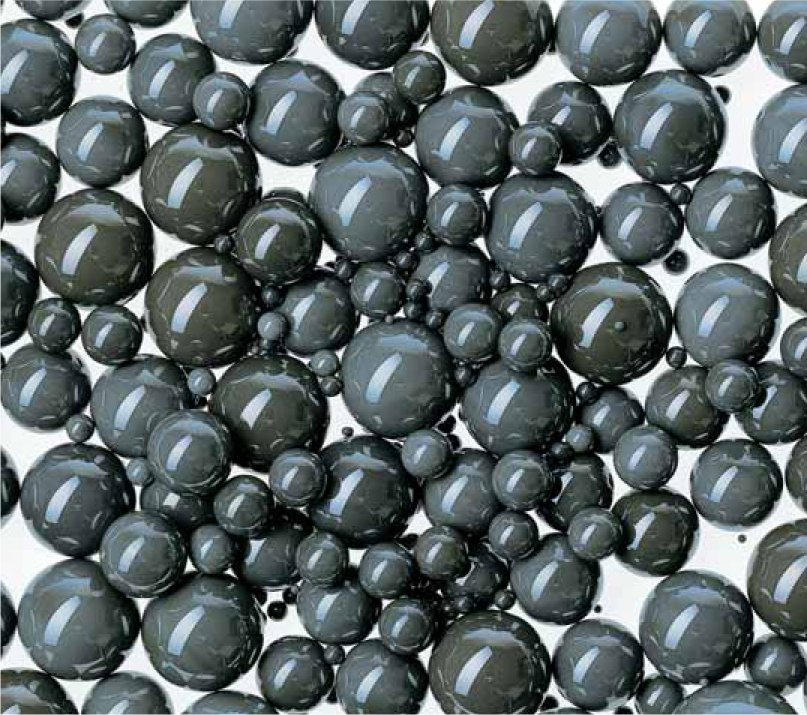The family of nitrides and carbides contains some of the hardest man-made substances, most of which are used in high-end engineering applications. Silicon nitride is generally offthe radar when it comes to materials specified by designers. This may be partly due to the cost of some of these high-performance advanced ceramics, but also partly due to the fact that some of their characteristics have not travelled down the performance chain of consumer-facing products. However, this does not mean that they should not have a place in a designer’s palette of materials.
Within the family of nitrides and carbides, silicon nitride is the third hardest material. Synthesized in the 1960s at a time when many new materials were being developed as a result of space exploration, silicone nitride was used to withstand the hostile environments endured by jet engines. Even within this family of super-strong materials, it stands out as having some incredible mechanical properties, including a very high compression strength of 4 million psi or, to put it another way, the ability to support the weight of 80 elephants balanced on a piece of silicon nitride the size of a sugar cube. It also has immense tensile strength: a 2.5 cm (1 in) diameter cable could lift 50 cars. And, in terms of surface smoothness, if a silicon nitride ball bearing were the size of the Earth, the roughest peak would be only be 6 metres (19 ft) high, the reason why it is so popular as a material for bearings.
Image: Silicon nitride ballbearings

•Extremely hard
•High resistance to wear
•High resistance to thermal shock
•Excellent compression strength
•Three times harder than steel, but 60% lighter
•A friction rating that is 80% lower than steel
•Stiffer than most standard metals
Sources
Available through specialist global suppliers.
Cost
The relatively high cost of silicon nitride in the past has limited it’s application, but newly developed sintered silicon nitride is a far more cost-effective option.
Sustainability issues
New methods of fabricating silicon nitride parts by sintering is far more energy efficient than the conventional methods, because the process can shorten the processing time and reduce energy consumption.
Production
Like most advanced ceramics, silicon nitride can be processed using a variety of techniques. These include dry pressing (which is suited to batch production), ceramic injection moulding, extrusion, slip casting for producing thin-walled, hollow shapes and hot and cold isostatic pressing, It can also be machined and ground with diamond wheels.
Typical applications
This is a material that is far more effective and useful for its physical and mechanical properties than its visual. It is ideal for components working under mechanical loads and engine parts, especially at high temperatures. These include the main engine of the space shuttle, military missiles and gyroscopes. Other uses include bearings for saltwater fishing reels, racing bicycles, skates and skateboards.
Derivatives
–Hot isostatically pressed silicon nitride (HIPSN)
–Partial pressure sintered silicon nitride (PSSN)
–Pressureless sintered silicon nitride (SSN)
–Hot pressed silicon nitride (HPSN)
–Sintered reaction-bonded silicon nitride (SRBSN)
–Reaction-bonded silicon nitride (RBSN)
| + | – |
|
–Incredibly high compression strength –High thermal shock resistance –High resistance to wear –Relatively lightweight |
–Only available through specialist suppliers –Traditionally-processed silicon nitride is extremely expensive |
